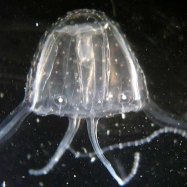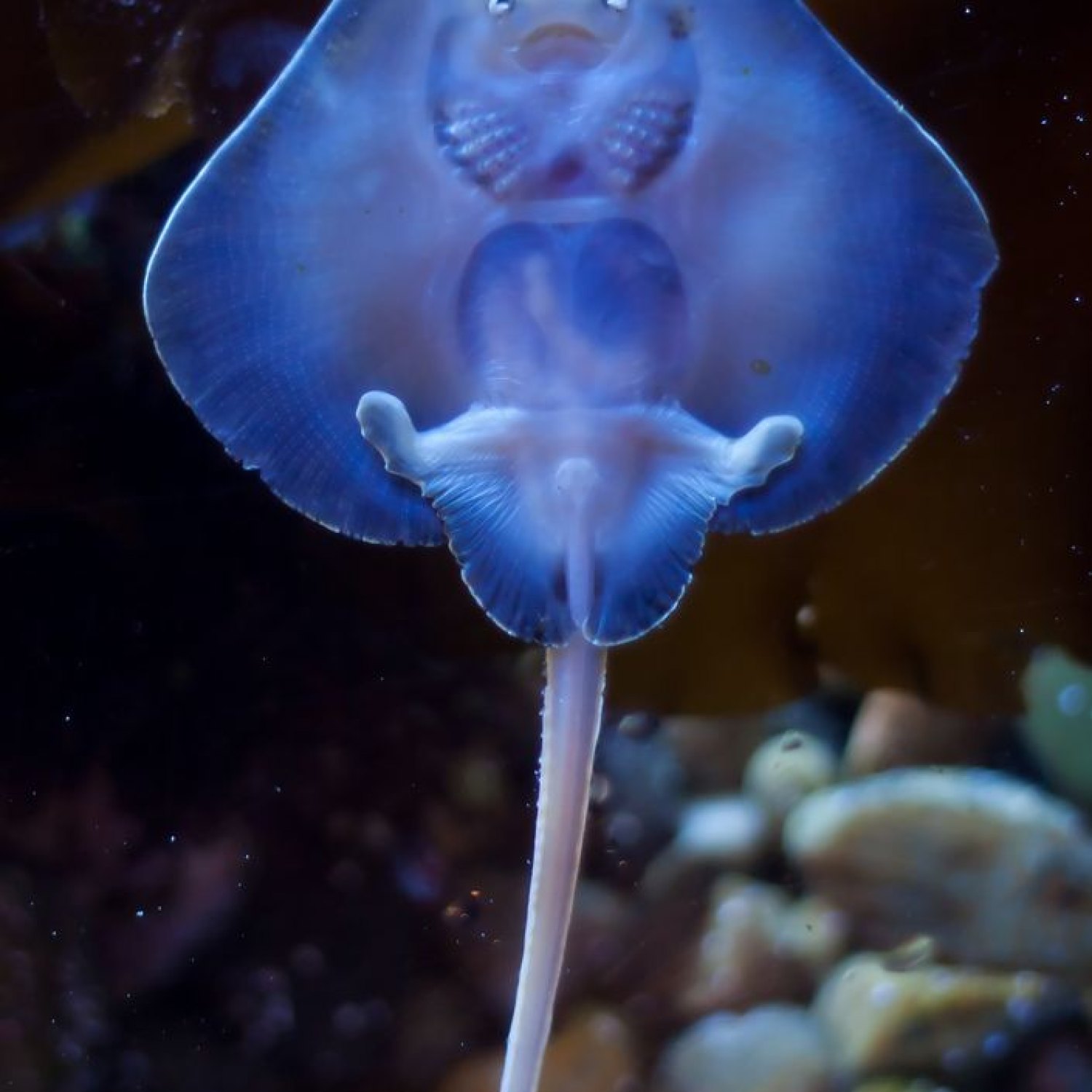
Stingray
Up to 6.5 feet
Stingrays are fascinating sea creatures with a flat and disc-shaped body, belonging to the Dasyatidae family. Found in coastal areas, they can grow up to 6.5 feet in length. With their unique appearance and graceful movements, they are a popular sight for coastal divers and tourists. Watch out for these gentle giants on your next beach trip! #stingrays #coastalwildlife
Animal Details Summary:
Common Name: Stingray
Kingdom: Animalia
Habitat: Ocean
The Mystical and Misunderstood Stingray: Exploring the World's Most Enigmatic Ocean Creature
The ocean is vast and diverse, filled with a plethora of unique and fascinating creatures. One such creature that has captured the imagination of humans for centuries is the stingray. With its flat, disc-shaped body and mesmerizing movements, the stingray is a truly enigmatic species that has fascinated researchers and ocean enthusiasts alike.In this article, we will explore the world of stingrays, diving deep into their origins, habitat, feeding method, and unique characteristics that make them one of the most fascinating creatures of the ocean Stingray.
The Anatomy and Taxonomy of the Stingray
The stingray, or Dasyatis spp., belongs to the Animalia kingdom, the phylum Chordata, and the class Chondrichthyes, commonly known as cartilaginous fish. They are part of the Myliobatiformes order, which is made up of over 300 different species of rays. They are further classified into the Dasyatidae family and have various common names, including mantas, devilfish, and sea whips.One of the most distinctive features of the stingray is its flat and disc-shaped body, which resembles a kite. Their bodies are usually wider than they are long, with pectoral fins that extend from the sides, giving them their infamous "wing-like" appearance. Most stingrays have a pointed snout, while others may have a more rounded head.
Stingrays vary in size, with the smallest species measuring only 1 foot in length and the largest reaching up to a staggering 6.5 feet Sand Cat. They have a unique coloring, with shades of brown, black, and gray, often with intricate patterns and markings. However, their coloration can differ depending on the species and their geographical location.
Habitat and Distribution of the Stingray
The stingray is a truly global species, found in all oceans of the world, from the tropical seas to the cold waters of the Arctic and Antarctic. They are prevalent in coastal areas, with some species also inhabiting brackish or freshwater environments. Stingrays are most commonly found in shallow, warm waters, as they prefer to feed and live near the ocean floor.Their geographical distribution varies, with some species being more localized and others being more widespread. For example, the Atlantic stingray is commonly found in the western Atlantic Ocean, from Argentina to Canada, while the Porcupine ray is only found in the Indian Ocean. However, on average, the stingray can be found in almost all coastal areas worldwide.
The Fascinating Feeding Method of Stingrays
Stingrays are carnivorous creatures, meaning they feed on other animals to survive. Their primary food source is fish, crustaceans, and mollusks, which they find by using their excellent sense of smell and electroreception.Some species of stingrays are bottom-feeders, meaning they will bury themselves in the sand and wait for prey to pass by, while others will actively hunt for their food. They have an interesting feeding mechanism, using their powerful jaws and crushing plates to crush and eat their food.
Some species of stingrays, such as the manta ray, also have a unique feeding habit known as "filter-feeding." These stingrays have modified gill rakers that act as sieves, filtering small plankton and other food particles from the water, which they then consume.
The Mysterious and Misunderstood Stingray
Despite their peaceful nature, stingrays have often been portrayed as dangerous creatures, thanks to their infamous stinger. However, the truth is that stingrays only use their stinger as a defensive mechanism if they feel threatened. They are not aggressive animals and will usually swim away from humans if given the chance.Unfortunately, incidents involving stingray stings have occurred, with the most notable being the tragic and untimely death of beloved conservationist Steve Irwin. However, these incidents are rare, and the stingray remains a peaceful and misunderstood animal.
Interestingly, the stingray's stinger is made up of modified scales, known as "placoid scales," which can regenerate if broken or lost. This adaptation allows stingrays to protect themselves without losing their defense mechanism permanently.
The Role of Stingrays in the Ocean Ecosystem
As with all creatures, the stingray plays a vital role in the ocean's delicate ecosystem. They are often referred to as the "gardeners of the sea" due to their habit of digging through the ocean floor with their pectoral fins. This behavior helps to create small depressions, which in turn, provides shelter for other marine animals.Additionally, stingrays are part of the food chain, with many species being preyed upon by larger marine animals, such as sharks and killer whales. They also play a significant role in the tourism industry, with many countries offering stingray-watching tours, where visitors can snorkel and interact with these graceful creatures in their natural habitat.
The Conservation of Stingrays and their Threats
Unfortunately, like many other ocean creatures, stingrays are facing increasing threats from human activities and environmental changes. Their streamlined shape makes them vulnerable to getting caught in fishing nets, leading to accidental catches. They are also targeted for their meat, oil, and gill plates, which are used in traditional medicine.Climate change also poses a significant threat to stingrays, as changes in water temperature and acidity levels can affect their food sources and overall survival. The degradation of coral reefs, which serve as essential habitats for many stingray species, is also a concern.
To protect and conserve stingrays, various organizations and governments have implemented regulations and programs to reduce accidental catches and promote sustainable fishing practices. Education and awareness campaigns are also essential in preserving these magnificent creatures for future generations to enjoy.
The Magic of Swimming with Stingrays
One of the most unforgettable experiences for ocean enthusiasts is the opportunity to swim with stingrays. Several locations around the world offer this once-in-a-lifetime experience, where visitors can interact and swim alongside these gentle creatures.The Caribbean island of Grand Cayman is a popular destination for stingray lovers, as it boasts a shallow sandbar where hundreds of stingrays gather, providing an up-close and personal encounter. Stingray City in the Grand Cayman is known as one of the best places in the world to interact with these magnificent creatures.
In the Maldives, visitors can take a speedboat to the sandy shallows of Stingray Point, where wild stingrays swim freely and can be fed and even hand-fed by visitors. Similarly, in Bora Bora, visitors can take a boat tour to dive in the crystal-clear waters of the lagoon and swim among giant and majestic manta rays.
Stingrays are also a popular attraction in aquariums and marine parks worldwide, where visitors can learn more about these fascinating creatures and even participate in feeding and touch pools.
The Stingray: A Fascinating and Mysterious Creature of the Ocean
In conclusion, the stingray is a truly unique and wondrous creature that continues to captivate and intrigue us. From their elegant and graceful movements to their vital role in the ocean ecosystem, there is no denying the magic and mystery of these animals.As we continue to learn more about stingrays and their behavior, it is imperative that we take steps to protect and conserve these creatures for future generations to admire and enjoy. Whether it's swimming with wild stingrays in their natural habitat or marveling at them in aquariums, the stingray is a creature that will continue to fascinate us for years to come.

Stingray
Animal Details Stingray - Scientific Name: Dasyatis spp.
- Category: Animals S
- Scientific Name: Dasyatis spp.
- Common Name: Stingray
- Kingdom: Animalia
- Phylum: Chordata
- Class: Chondrichthyes
- Order: Myliobatiformes
- Family: Dasyatidae
- Habitat: Ocean
- Feeding Method: Carnivorous
- Geographical Distribution: Worldwide
- Country of Origin: Various
- Location: Coastal areas
- Animal Coloration: Varies by species
- Body Shape: Flat and disc-shaped
- Length: Up to 6.5 feet
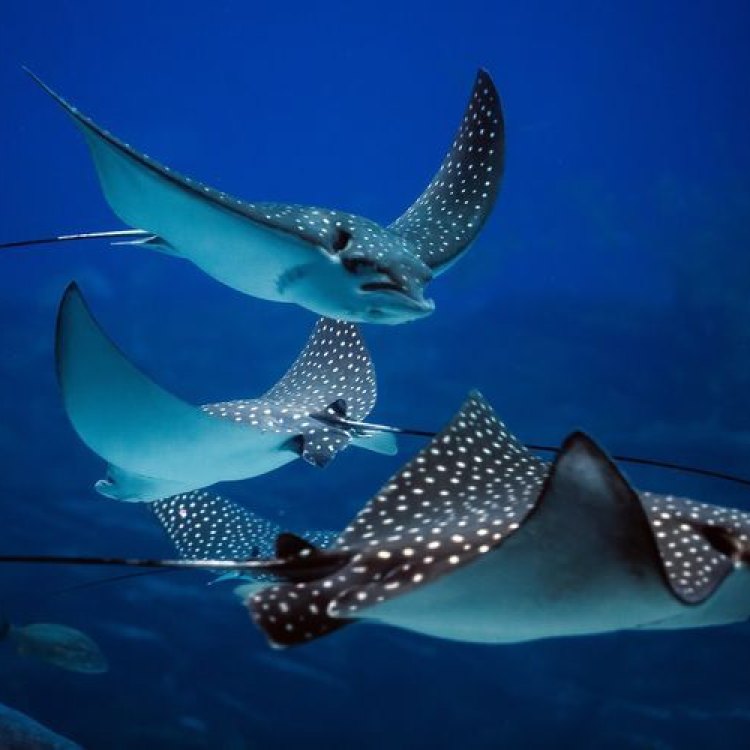
Stingray
- Adult Size: Varies by species
- Average Lifespan: 25-30 years
- Reproduction: Oviparous
- Reproductive Behavior: Fertilization occurs internally
- Sound or Call: Does not produce sound
- Migration Pattern: Varies by species
- Social Groups: Solitary
- Behavior: Nocturnal and bottom-dwelling
- Threats: Habitat loss, overfishing, bycatch
- Conservation Status: Varies by species
- Impact on Ecosystem: Key predators in marine ecosystems
- Human Use: Fishing, aquarium trade
- Distinctive Features: Venomous stingers, flat body shape
- Interesting Facts: Some species are capable of delivering painful and potentially lethal stings to humans
- Predator: Sharks, larger bony fish
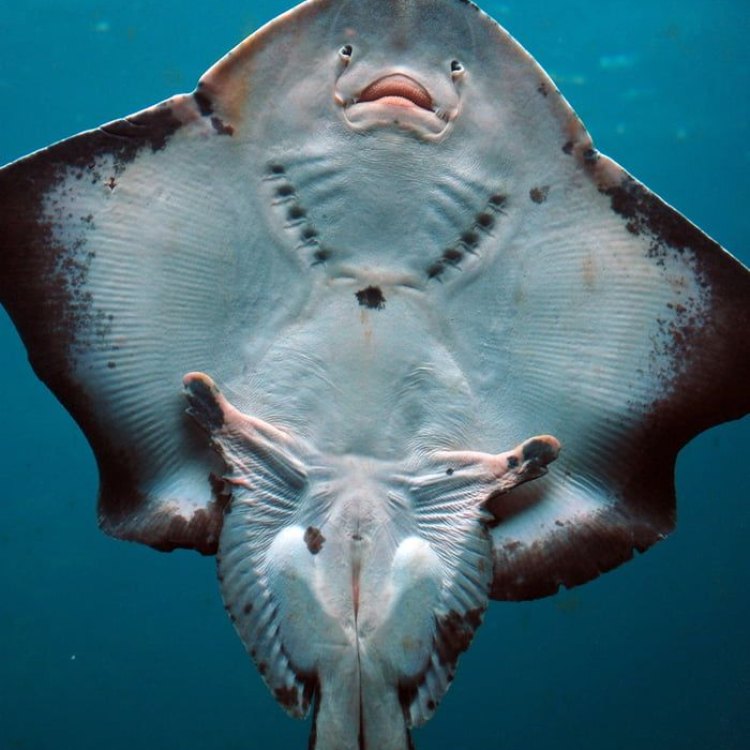
Dasyatis spp.
The Mysteries and Wonders of Stingrays
The ocean is home to some of the most fascinating and awe-inspiring creatures. From colorful coral reefs to mysterious deep-sea creatures, there is no shortage of wonders waiting to be discovered. One such creature is the stingray, a unique and often misunderstood fish that holds many secrets beneath its flat, unassuming exterior.Stingrays are a diverse group of fish that belong to the family Dasyatidae PeaceOfAnimals.Com. They can be found in various marine habitats, from shallow coastal waters to deep ocean trenches. However, their fascinating features and behavior are often overshadowed by their infamous reputation as dangerous creatures. In this article, we will explore the true nature of stingrays and unveil some interesting facts about these enigmatic fish.
Adult Size and Average Lifespan
Stingrays come in a wide range of sizes, with the smallest species measuring only a few inches while the largest can reach up to 14 feet in width. The sizes of adult stingrays vary greatly depending on the species, with some being smaller, while others are quite large. For instance, the short-tail stingray, found in Australian waters, can grow up to 5 feet in width, while the roughtail stingray, found in the Atlantic Ocean, can reach up to 14 feet in width.
In terms of lifespan, stingrays can live for an average of 25-30 years in the wild. However, some species have been known to live for as long as 50 years with proper care in captivity. The lifespan of a stingray is heavily influenced by factors such as habitat, predators, and human activities Spanador.
Reproduction and Reproductive Behavior
One unique aspect of stingrays is their reproductive behavior. They are oviparous, meaning they lay eggs, and their fertilization occurs internally. Unlike most fish that lay eggs in the water, female stingrays retain the fertilized eggs inside their body until they are ready to hatch. This process is known as aplacental viviparity, a form of reproduction similar to that of mammals.
During mating, male stingrays use their specialized claspers to transfer sperm into the female's reproductive tract. The fertilized eggs will then develop and hatch inside the female before being released into the water. This reproductive adaptation helps protect their young from potential predators and provides them with a higher chance of survival.
Sound or Call and Migration Pattern
Unlike some marine animals that produce vocalizations, stingrays do not produce any sounds. They are silent creatures, relying on their other senses, such as vision and smell, to navigate their surroundings. In contrast, some species of manta rays are known to vocalize with low-frequency sounds for communication and echolocation purposes.
When it comes to migration, it's challenging to pinpoint a specific pattern among stingrays. Some species, such as the Atlantic and Gulf sturgeon, are known to migrate long distances, while others are more sedentary and rarely leave their home range. It mainly depends on the species and the availability of food and suitable habitat.
Social Groups and Behavior
Stingrays are solitary creatures, and it's rare to see them in groups. They mostly prefer to forage alone and avoid competition for resources. However, some species, like the giant devil ray, have been observed to form large groups during feeding or mating.
As for their behavior, stingrays are mostly nocturnal and bottom-dwelling. During the day, they prefer to rest on the ocean floor, buried under sand or mud, camouflaging themselves from potential predators. They are most active at night, using their electric senses to navigate and locate food.
Threats and Conservation Status
Stingrays, like most marine animals, face various threats in the wild. Habitat loss, overfishing, and bycatch are among the main concerns for their survival. Due to their bottom-dwelling behavior, they are highly vulnerable to being caught unintentionally as bycatch in fishing nets.
Another significant threat to their population is habitat loss. As more and more coastal areas are developed, their natural habitats (such as mangroves and seagrass beds) are destroyed, leaving them with limited space to thrive. In addition, overfishing has caused a significant decline in certain species of stingrays, affecting their ecosystem as a whole.
As a result, the conservation status of each species of stingray varies. While some are classified as least concern, others, such as the Mediterranean stingray, are listed as critically endangered. It's crucial to protect and preserve these gentle creatures, as they play a vital role in maintaining the balance of our oceans.
Impact on Ecosystem and Human Use
Stingrays are essential predators in marine ecosystems, controlling the population of small fish, crustaceans, and other invertebrates. They also help maintain the health and balance of coral reefs by controlling populations of algae grazers and keeping the coral clean.
Human use of stingrays mainly revolves around fishing and the aquarium trade. In some countries, stingray meat is considered a delicacy, and they are caught for food consumption. In the aquarium trade, some smaller species of stingrays are popular among enthusiasts, however, keeping these wild animals in captivity can be challenging and requires proper care and expertise.
Distinctive Features and Interesting Facts
Stingrays are easily recognizable by their unique features. They have flattened bodies with pectoral fins that are used for swimming, a long tail with a venomous stinger, and gill slits on the underside of their body. Their flat, almost disc-like shape allows them to blend seamlessly into the ocean floor, making them hard to spot by predators.
One interesting fact about stingrays is that some species are capable of delivering painful and potentially lethal stings to humans. The sting is caused by a sharp spine located near the base of their tail, which can easily penetrate the skin and deliver venom to the victim. While most stingrays are not aggressive and will not attack unless provoked, it's important to exercise caution when swimming in waters where they are known to reside.
Predators of Stingrays
Despite their potentially harmful sting, stingrays also fall prey to various predators themselves. Sharks and larger bony fish, such as groupers and barracudas, are among the main predators of stingrays. They use their speed, agility, and sharp teeth to attack and prey on stingrays. In addition, some species of stingrays are also targeted by humans for their meat, skin, and other body parts.
In Conclusion
Stingrays may have a fearsome reputation, but they are incredibly fascinating and vital creatures in our marine ecosystems. Their unique features, behaviors, and reproductive adaptations make them incredibly adaptable to their environments. However, they face numerous threats that can have a significant impact on their population. It's crucial for us to educate ourselves about these animals and take steps to protect and preserve their habitats for generations to come. The next time you spot a stingray, remember to admire its beauty from a safe distance and appreciate the wonders of the ocean.
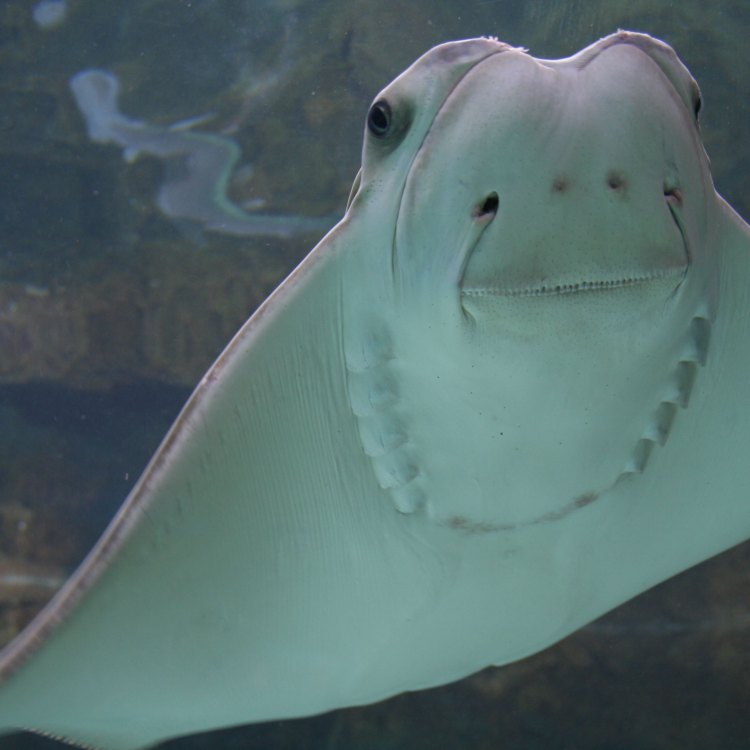
The Mystical and Misunderstood Stingray: Exploring the World's Most Enigmatic Ocean Creature
Disclaimer: The content provided is for informational purposes only. We cannot guarantee the accuracy of the information on this page 100%. All information provided here may change without prior notice.






